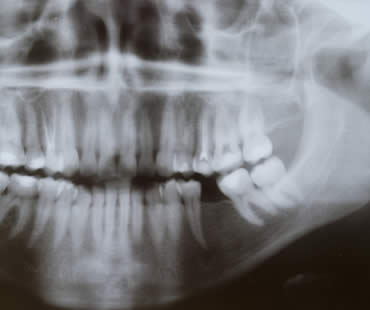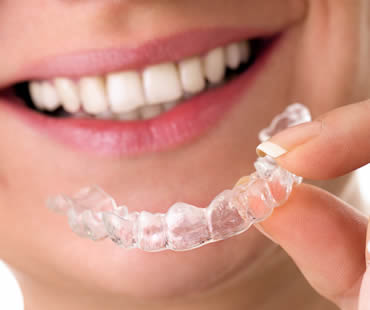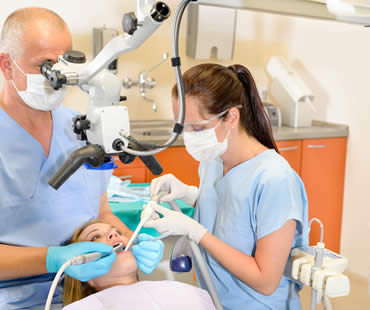
Obstructive sleep apnea is a condition created when a portion of the upper airway is blocked, causing breathing interruptions during sleep and low blood oxygen levels. As many as 20% of adults are affected by mild obstructive sleep apnea, while one in fifteen suffers from more severe apnea.
Symptoms of obstructive sleep apnea include snoring, extreme daytime drowsiness, restless sleep, high blood pressure, depression, problems with mental function, as well as a host of other mental and physical concerns. Left untreated, obstructive sleep apnea can lead to a long list of serious medical conditions, including hypertension, heart attack and stroke.
If you have been diagnosed with obstructive sleep apnea, your doctor may initially treat the condition with a CPAP device that you wear while sleeping. While a CPAP machine will reduce the obstruction to the airway, it is not a cure and will only be effective during use. Other non-surgical treatment recommendations may include the wearing of mouthguards to reposition the jaw, sleep position changes, or weight loss.
Tongue muscle advancement involves moving the bony attachment of the tongue muscles, and can be combined with palatal surgery to reduce excess tissues. This therapy may also include removing enlarged tonsils and nasal surgery. These treatments are most often used for milder cases of obstructive sleep apnea.
However, if these treatments do not work or for more severe cases of obstructive sleep apnea, oral surgery offers solutions to correct apnea. Maxillomandibular Advancement is a procedure that repositions the upper and lower jaw and chin to open the airway. This treatment is highly successful and offers the greatest chance of permanent correction in moderate to severe cases of obstructive sleep apnea.
For more information about how surgical therapies and treatments can be utilized to address your obstructive sleep apnea, consult with a qualified oral and maxillofacial surgeon.
Our dental office is located in Ottawa

Tooth pain can be one of the most uncomfortable types of pain there is. It can make your whole jaw and head ache, interfere with eating, and cause your teeth to be more sensitive. One common reason for a toothache is your wisdom teeth, which are the molars in the very back of your mouth that develop last. Sometimes they don’t even erupt, but they can still be there under your gums causing trouble. If you experience pain related to wisdom teeth, here are some suggestions.
Make an appointment to see your dentist as soon as possible. This way you can find out for sure if your wisdom teeth are to blame for your pain, and decide the best treatment plan for your situation. A dentist examination, which may include x-rays, is the best way to determine exactly what’s going on with your teeth. You may not even be able to see your wisdom teeth, but they might be growing improperly under your gums. Often, wisdom teeth need to be extracted to avoid continued pain or worsening condition. Luckily, wisdom teeth extraction is a common procedure that your dentist or oral surgeon is very familiar with, and can provide you with great treatment that will end up relieving your pain.
While waiting for your dental appointment, try applying an over-the-counter numbing gel such as Oragel. This may help relieve your pain at least for a short time. Also, taking non-prescription pain medicines should help. Acetaminophen and ibuprofen are both good choices to try, especially to subdue the pain when you want to sleep.
Remember that prevention is often the best way to avoid dental pain. Brush your teeth at least twice a day, and floss every day. See your dentist regularly for checkups, because problems with wisdom teeth can sometimes be spotted before you ever begin to feel any pain associated with them. This allows you to deal with the problem before you have to endure a toothache.
If you live in the Ottawa area contact us today

With an estimated 49 million adults in the United States wearing dentures, there are lots of lessons learned about wearing them. Virtually everyone will say that it took a little adjustment time before they were comfortable and confident with their new teeth. It can help to know what to expect with wearing dentures at first.
Your dentures may feel very strange the first day you get them. They can seem too big for your mouth, and as though your lips are out of place. These strange sensations will disappear with time. You may also notice more saliva than usual in your mouth. This is a natural response of your mouth as it grows accustomed to the appliance.
A liquid diet is recommended by many dentists for the first couple of days after getting dentures. Then you may begin eating soft foods, like cooked vegetables, eggs, and fish. Take small bites and chew slowly. Avoid biting into foods with your front teeth.
Mouth soreness from your dentures should go away after a few days. If it lasts longer than a week, call your dentist to ask if you should be seen. You may experience minor mouth sores for the first couple of weeks that you wear dentures. This is normal as you give your mouth time to adjust. If the sores are severe, call your dentist.
Dentists recommend that you remove your dentures for a minimum of eight hours each day to give your gums a rest. Most patients do this at night while sleeping. Your dentist will provide instructions about how to care for your dentures and where to store them when not wearing them. Be sure to follow the instructions for care to ensure that your dentures last as long as possible.
If you live in the Ottawa area contact us today

But am I too old to deal with the hassle of teeth straightening? You may be surprised to learn how little your routine will change with Invisalign. From your morning schedule, to meals, work-outs, and bedtime you can go about your day in much the same way as before you chose to beautify your smile with this state of the art treatment.
Always rushed in the morning? Simply pop out the Invisalign aligners, brush and floss normally, and pop them right back in place. To clean the aligners, you can either use the cleaning kit provided or brush and rinse with warm water. The process is easy and quick, allowing you to get out the door to your meeting or carpool in a flash.
Big lunch with clients or a special luncheon? No problem. With Invisalign, you remove the aligners during meals. No worries about spinach stuck in metal brackets and wires, or restrictions on the types of food you can eat. Enjoy your lunch with confidence.
But I love to play basketball at lunch, and soccer with my kids? If contact sports are a big part of your life, Invisalign won’t get in your way. You can leave the aligners in without concern that you might cut your mouth, or remove them if you normally wear a mouth guard when playing. Score another point for Invisalign!
I’m so tired by bedtime that I just want to fall into bed, won’t they take forever to clean? With Invisalign, no need to worry about the tedious cleaning and flossing between brackets and wires as with traditional braces. Since the aligners are removed for oral hygiene tasks, you can simply brush and floss your teeth normally, and then brush and rinse your aligners. It’s so quick that your pillow won’t have time to miss you.
As you can see, with Invisalign, your daily routine will experience minimal changes, but your smile will achieve maximum results!
If you need a dentist in Ottawa contact us today

For people who don’t feel confident about showing their teeth when smiling, dental veneers provide a great way to restore self-esteem and quickly create beautiful smiles. No longer only for the rich and famous, the secret of transforming smiles with veneers is out for everyone to enjoy the benefits.
Veneers are thin shells that go over the front surfaces of your teeth to hide imperfections. They are customized just for you so that they look very natural and appealing. Veneers cover problems like stained, chipped, crooked, or misshapen teeth. The most common materials that veneers are made from are composite or porcelain. Here are the details about each of these types of veneers.
Composite
- Has an opaque finish, but it’s difficult to match the color of your existing tooth enamel color
- Lifespan is usually two years or less
- Susceptible to staining because of its porous characteristics
- Requires careful and consistent maintenance to keep them looking good as long as possible
- Typically lower in cost than other types of veneers
Porcelain
- Has an opaque finish that appears natural and coordinates well with the color and texture of existing teeth
- Lifespan is usually from five to ten years
- Does not stain
- Requires good dental hygiene for the best results
Whichever type of dental veneers you might select, chances are good that you will be glad you chose to restore your smile in this way. People won’t even realize that underneath the veneers you have crooked, discolored, uneven, or chipped teeth. Your secret will be safe, thanks to the technology of dental veneers.
If you need a dentist in Ottawa contact us today

Most dental professionals recommend having third molars, or wisdom teeth, removed in early adulthood, preferably before they are fully formed and rooted into the jaw. Generally, this means having wisdom teeth extracted between the ages of 17 and 25. Waiting until you are older to have wisdom teeth removed can have considerable risks and complications.
Wisdom teeth that are not removed create the following risks:
- Impaction caused by wisdom teeth that do not have sufficient room to grow, causing pain and potential disease and damage to adjacent teeth.
- Tooth decay from wisdom teeth that are difficult to keep clean.
- Infection caused by bacteria that is harbored in the wisdom tooth eruption site.
- Growth of tumors and cysts caused by severely impacted wisdom teeth.
For patients who need to have wisdom teeth removed later in life, complications can include:
- More complicated removal surgery to eliminate deeply rooted or impacted wisdom teeth that results in longer surgery recovery time.
- Roots that have grown close to the nerve that affects the feeling in the lower lip might be injured in surgery, causing permanent nerve damage.
If you or your young adult have emerging wisdom teeth, schedule a consultation with your dentist to determine if and when they should be removed. While some patients will not need to have their third molars extracted, in most cases, having wisdom teeth removed as they are erupting can help to avoid a host of future problems. When wisdom tooth extraction is performed early, recovery time and risk of complications are drastically reduced for most patients.
We treat patients from Ottawa and the surrounding area







